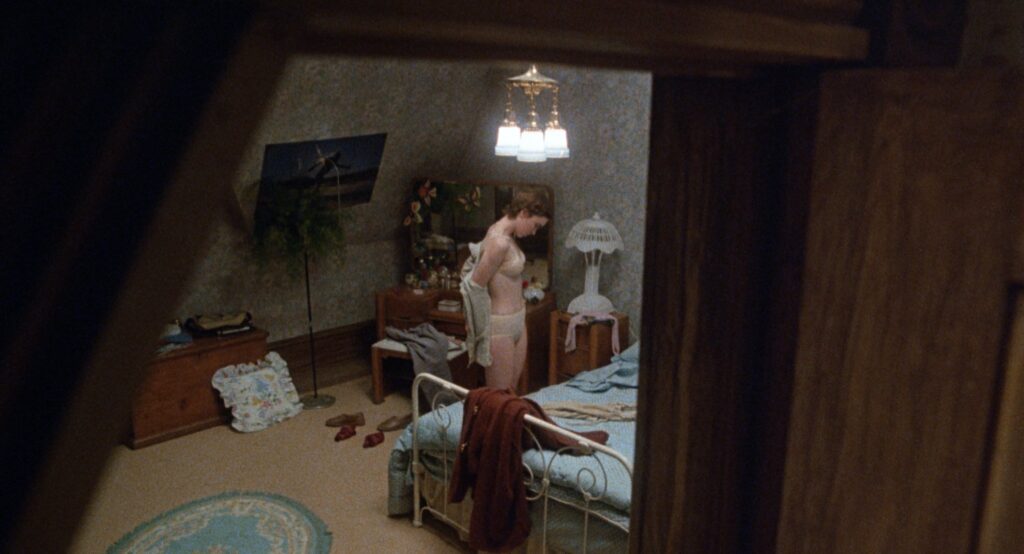
In a small Canadian town something or someone is terrorizing young women. In an attempt to procreate it has been attacking women and killing those with whom it has been failing to reach a climax. The local police chief (John Ireland) has been stymied in his investigations into these horrible crimes, so it’s up to the local doctor (John Cassavetes) and an investigative journalist (Kerrie Keane) to solve this gruesome mystery before it is too late.
John Hough’s The Incubus (1982) is a supernatural thriller that utilizes a number of formal elements associated with the slasher sub-genre of horror. On an aesthetic level the most impressive sequences in the film are those when the incubus attacks its victims. Hough’s camera gives us POV shots from the demon’s perspective, connecting the incubus to the typical slasher antagonist. These shots are intercut with shots of the victims being attacked. In the images of women being attacked the framing as well as the blocking stylize the violence as representational rather than literal.
Traditionally an incubus is a demon or monster that rapes women in their sleep. The aesthetic connection that Hough draws between the demon and the villain of the standard slasher pinpoints a shared modus operandi as well as motivation. It’s a deficiency on the part of the predator, be it a knife wielding mad man or a demon, that drives these creatures to terrible acts of violence. While The Incubus isn’t that complex in its Freudian analysis of the horror film it does suggest that this latent desire to destroy the unobtainable is part of what keeps audiences coming to see these films.
The Incubus sustains a pretty suspenseful atmosphere. Unconventional camera angles and framing choices imbue the images with a sense of the foreboding while the use of locations reiterates the isolation of small town living. These quietly affective visual strategies make up the bulk of the film while the scenes of the incubus attacks mentioned above serve as a sort of punctuation. As is the case with any well directed horror film, the build up of suspense must be given a release of some sort time and again.
One doesn’t just sit through a sleazy affair like The Incubus just because of a director’s competency. It’s John Cassavetes’ performance that, rather predictably, engages the viewer and keeps them invested in the narrative. With his hospital scrubs on Cassavetes looks exactly as he did in Whose Life Is It Anyway? (1981) the year before. In The Incubus there’s no Richard Dreyfuss for Cassavetes to steal scenes from. The task is far greater than that. What Cassavetes does is carry the entire film with a rather two dimensional character as his vessel. At every turn one can see Cassavetes making minute choices, the sum of which suggests that his character belongs to a world outside of the narrative confines of The Incubus.
